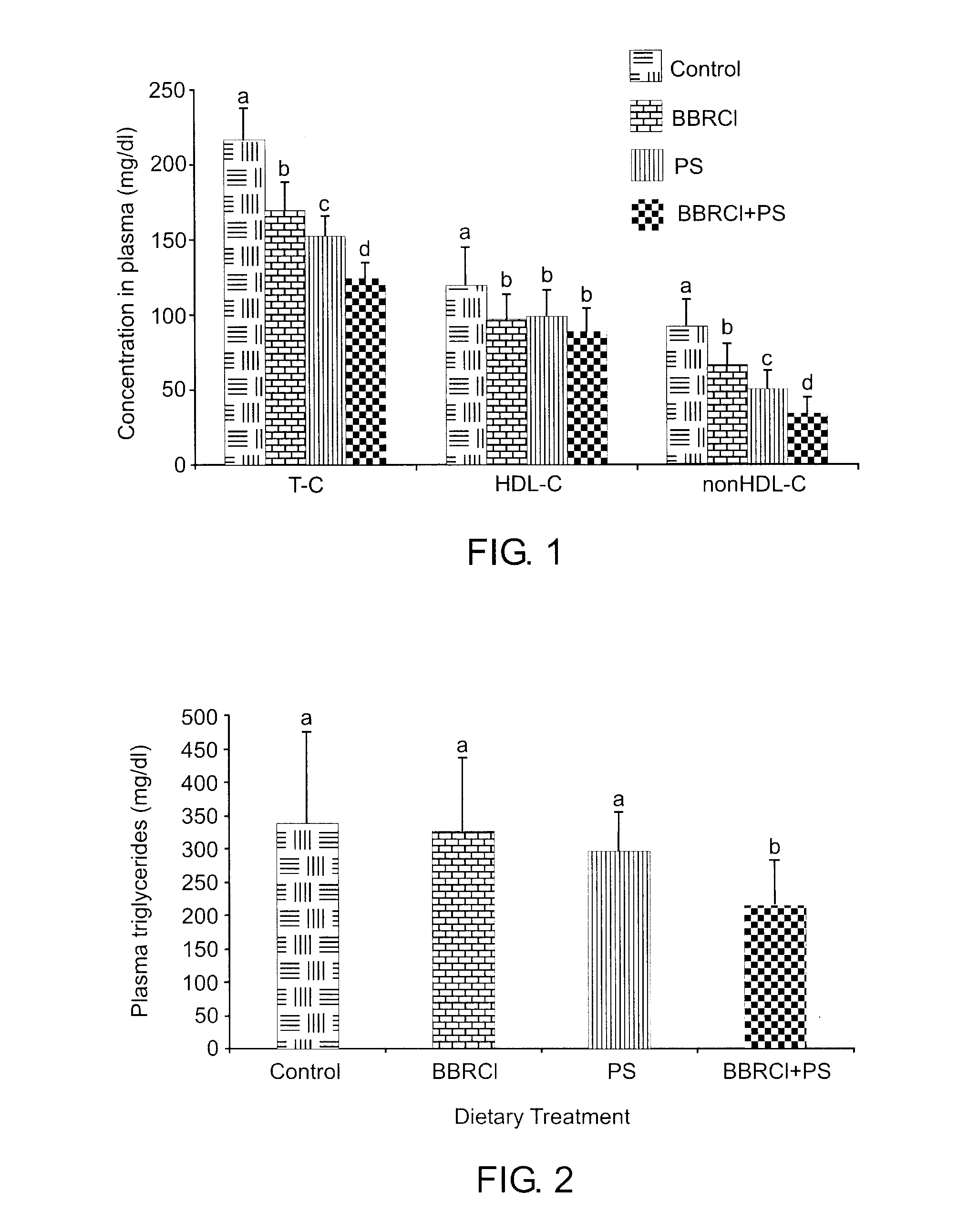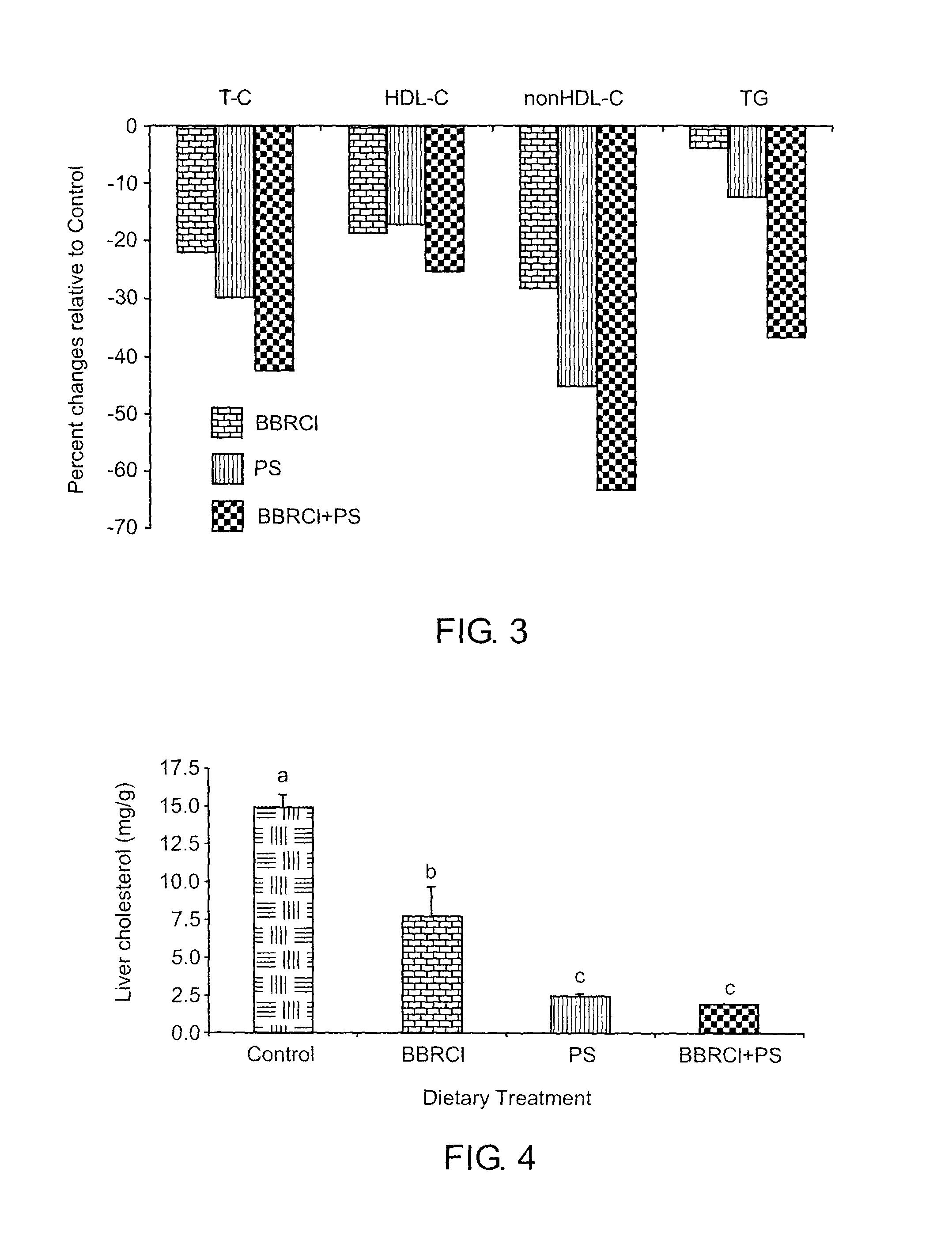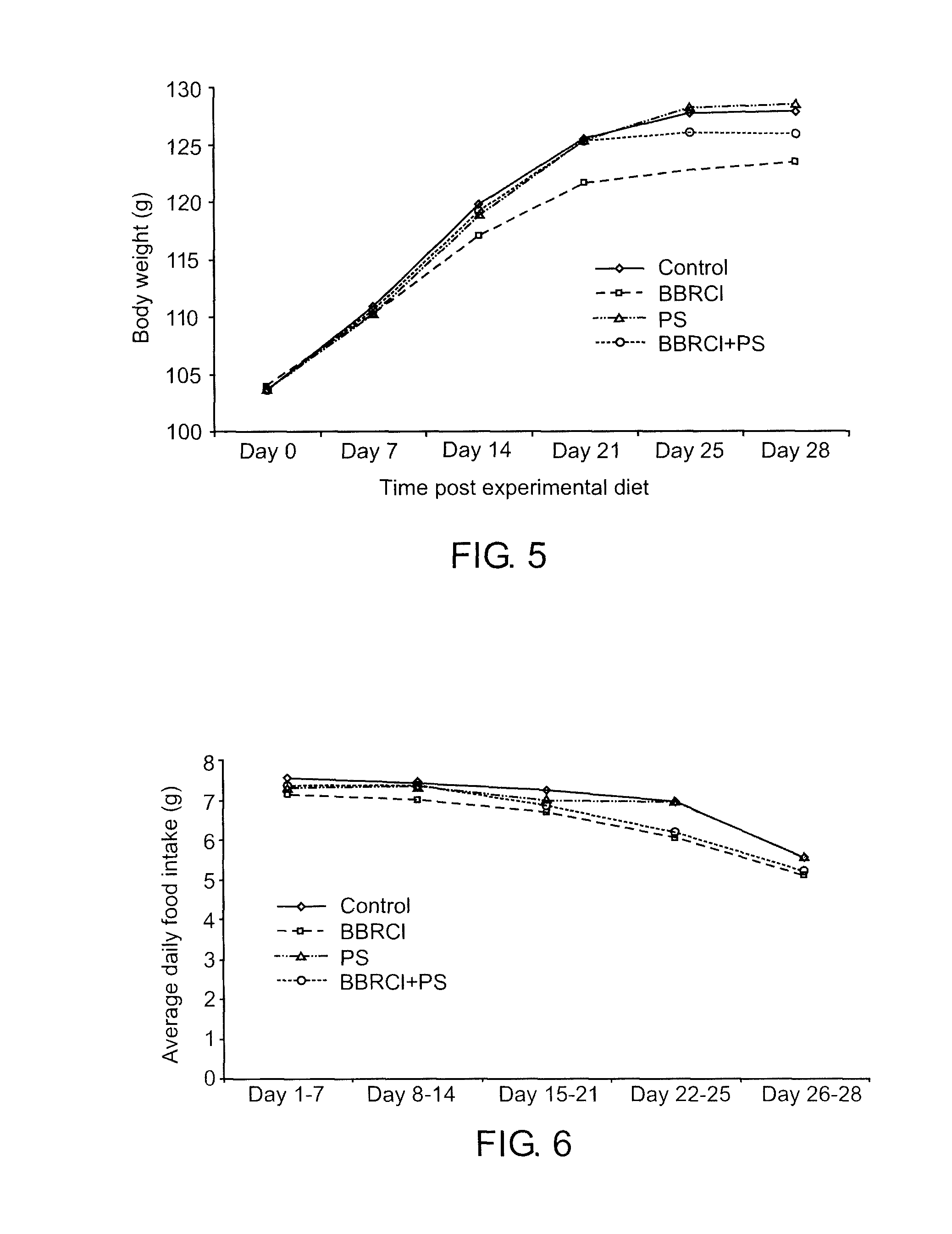Combinations of Botanical Extracts for Promoting Cardiovascular Health
a technology of botanical extracts and cardiovascular health, applied in the field of medicinal compositions, can solve the problems of increased incidence of cvd, limited efficacy of presently available products, and increased risk factors for cardiovascular disease, so as to reduce side effects, blood lipid-lowering efficacy, and reduce serum cholesterol levels
- Summary
- Abstract
- Description
- Claims
- Application Information
AI Technical Summary
Benefits of technology
Problems solved by technology
Method used
Image
Examples
example 1
[0050]This example provides data for the combination of berberine chloride (BBRCI) with plant stanols (PS) to improve blood lipid profiles toward positive health benefits to the cardiovascular system, cerebrovascular system, vasculature, liver, and body weight.
[0051]A controlled, four week animal study was performed to compare and contrast the effects of three interventional strategies on blood cholesterol and triglyceride levels. Four randomized groups of 15 male Golden Syrian hamsters were fed isocaloric diets as follows:[0052]Control a semi-synthetic casein-corn starch-sucrose diet that contained 0.15% (w / w) cholesterol and 5% (w / w) fat[0053]BBRCI control diet containing 100 mg / kg·d of BBRCI[0054]PS control diet containing 1% (w / w) PS[0055]BBRCI+PS control diet containing 100 mg / kg·d BBRCI and 1% (w / w) PS
[0056]BBRCI and PS were introduced into the diet by blending. The primary endpoint at the end of the study was to determine the effects of each intervention on circulating blood ...
example 2
[0074]In this example, a controlled, five week animal study was performed. A total of 48 male Golden Syrian hamsters were randomized into 4 groups of 12 and fed isocaloric diets as follows. Hamster husbandry, living and feeding conditions were similar to that used for Example 1.[0075]Control a semi-synthetic casein-corn starch-sucrose diet that contained 0.25% (w / w) cholesterol[0076]BBRCI control diet containing 100 mg / kg·d of BBRCI[0077]PS control diet containing 1% (w / w) PS[0078]BBRCI+PS control diet containing 100 mg / kg·d BBRCI and 1% (w / w) PS
[0079]One objective of this example was to determine the effects of each intervention on circulating blood lipids including total cholesterol (T-C), high-density-lipoprotein cholesterol (HDL-C), nonHDL-C (which is indicative of LDL-C levels) and triglyceride (TG) profiles when hamsters were fed a diet containing a higher concentration of cholesterol, for example, 0.25% by weight in the diet.
[0080]Table 6 summarizes the effect on blood lipid ...
example 3
[0083]In this example, a controlled, five week animal study was performed. Four randomized groups of 12 or 6 male Golden Syrian hamsters were fed isocaloric diets as follows. The dosage of PS was reduced from 1% to 0.5% (w / w) in the diet. Hamster husbandry, living and feeding conditions were similar to that in Example 1.[0084]Control a semi-synthetic casein-corn starch-sucrose diet that contained 0.25% (w / w) cholesterol[0085]BBRCI control diet containing 100 mg / kg·d of BBRCI[0086]PS control diet containing 0.5% (w / w) PS[0087]BBRCI+PS control diet containing 100 mg / kg·d BBRCI and 0.5% (w / w) PS
[0088]One objective of this example was to determine the effects of each intervention on circulating blood lipids including total cholesterol (T-C), high-density-lipoprotein cholesterol (HDL-C), nonHDL-C (which is indicative of LDL-C levels) and triglyceride (TG) profiles.
[0089]Table 8 summarizes the effect on blood lipid levels (values are means±SD, n=12). Data were analyzed by one-way ANOVA fo...
PUM
| Property | Measurement | Unit |
|---|---|---|
| Weight | aaaaa | aaaaa |
| Weight | aaaaa | aaaaa |
| Fraction | aaaaa | aaaaa |
Abstract
Description
Claims
Application Information
 Login to View More
Login to View More - R&D
- Intellectual Property
- Life Sciences
- Materials
- Tech Scout
- Unparalleled Data Quality
- Higher Quality Content
- 60% Fewer Hallucinations
Browse by: Latest US Patents, China's latest patents, Technical Efficacy Thesaurus, Application Domain, Technology Topic, Popular Technical Reports.
© 2025 PatSnap. All rights reserved.Legal|Privacy policy|Modern Slavery Act Transparency Statement|Sitemap|About US| Contact US: help@patsnap.com



